Discovering the "Cucuteni" culture in the History Museum of Moldavia
Entering the world of the Cucuteni civilization

In the History museum of Moldavia besides the the ruins and the fortifications of the former royal court and the and the other historical objects back to more recent centuries - of we can read about in one of my previous articles - I also find another galleries dedicated to the ceramic arts and in which I am so pleased to be discovering the world of the Cucuteni culture because, back when I was doing my Erasmus exchange in Saarbrucken, one of my projects was inspired by this beautiful ancient ceramic culture.
For my project I wanted to represent one vessel after one of those from Cucteni, but my aim was to create a to create a two-dimensional puzzle and to render the image of such a broken vessel in many pieces, these being the puzzle pieces.
But wait, what is "Cucuteni"?
If you’ve never heard of “Cucuteni”, you should know that this was the most outstanding civilization of prehistoric Europe that was spreading from southeast of Transylvania to all over the territory of Moldavia and up in the western part of Ukraine. Thus, the name of the culture comes from the finds made in the villages near Iași, more precisely, Cucuteni and also Trypillia, a village close to Ukraine.
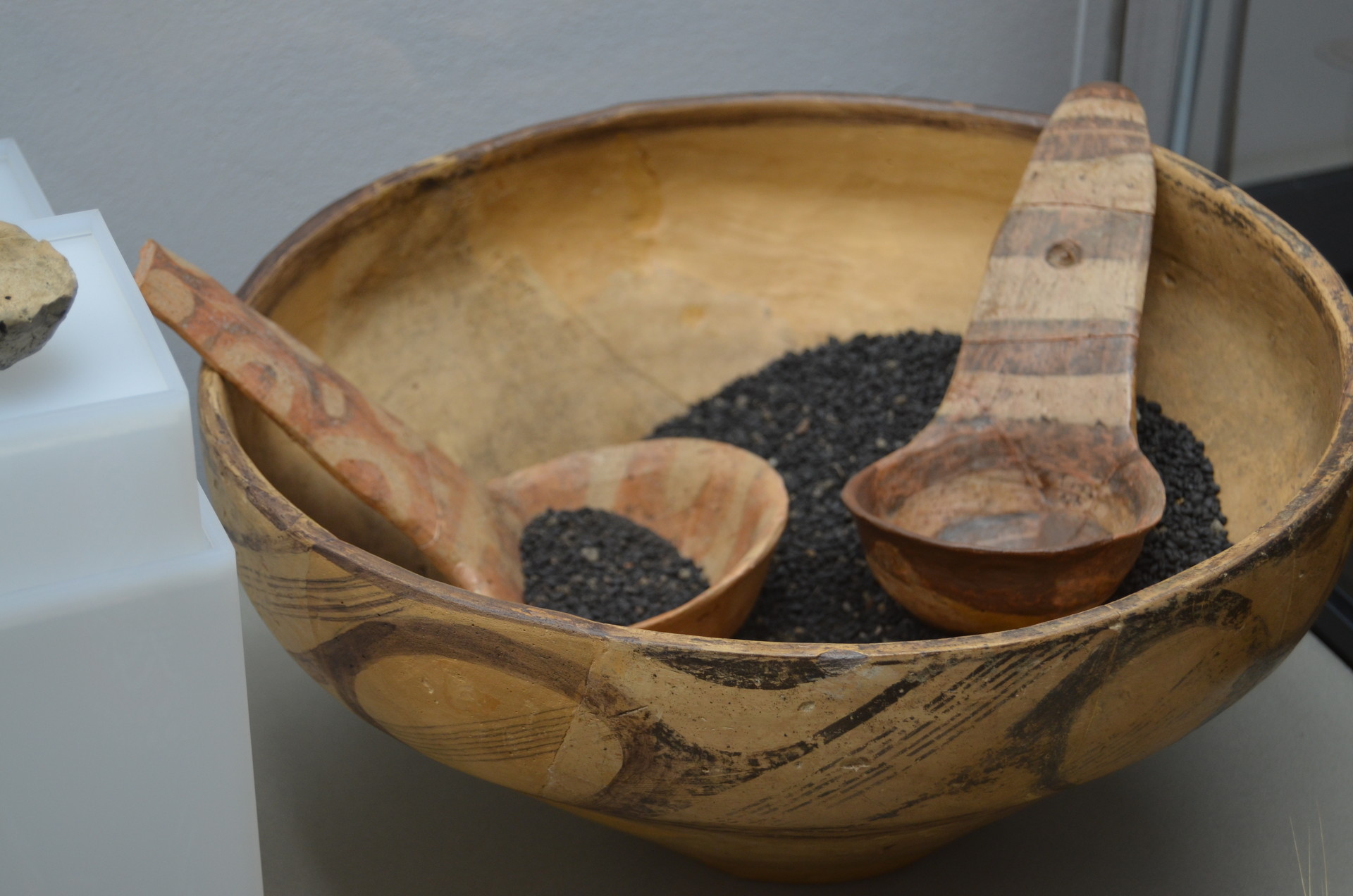
What’s astonishing and significant about the Cucuteni-Trypillia Culture is linked to its longevity, the civilization having an existence of one millennium a half. Plus, another interesting aspect showed that this culture had original features and could be compared with the famous discoveries of the Near Eastern or of the Central and South America.
The evolution of the Cucuteni ceramics
The Cucuteni culture had three phases of evolution and I notice how the entire exhibition is displayed on this basis like so “Cucuteni A”, “Cucuteni A-B” and “Cucuteni B”, that’s a good way of organizing the objects so that the viewer can understand how the creation process changed from period to period.
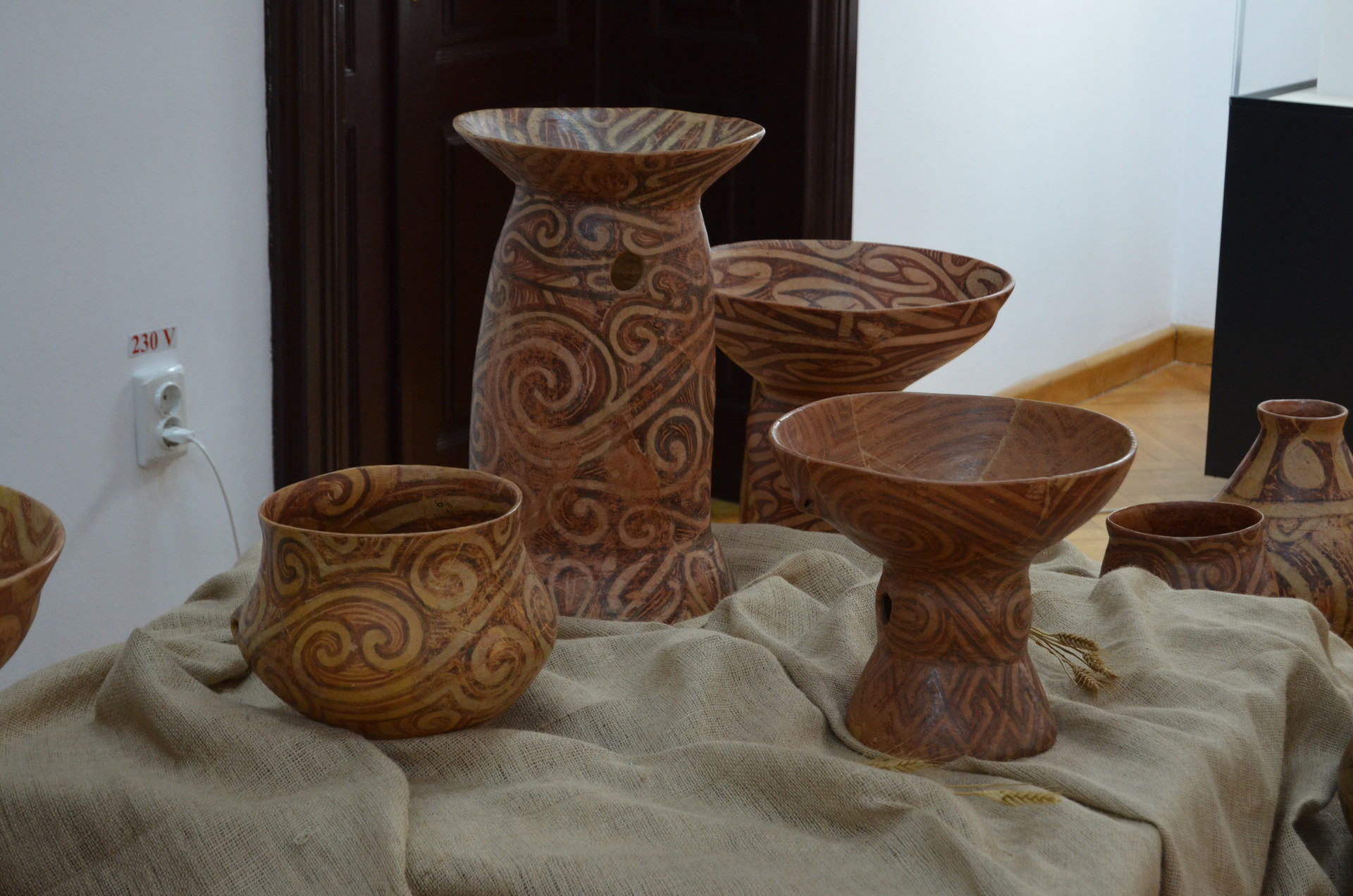
For the first ceramic phase I can admire being exhibited same highly decorated vessels of different shapes and sizes. Specific to the Cucuteni Culture is the three color painting combination: white and red are the main colors used at decorating the ceramic ware, black being mostly used for contouring certain decorative motifs.
The spiral as the main decorative motif
Speaking of the motifs, is definitely clear that the spiral is the main decorative motif when it comes to the Cucuteni culture. The spiral is composed and decomposed into chained spirals, sectioned, reduced only to curls and so on.
From here and there, are also appearing painted circles, ellipses, lines or stripes, all combined with the spiral motif of course. The ornamentation is not put randomly on the vessels, but is structured into registers which have the role to create symmetry, rhythmicity and equilibrium.
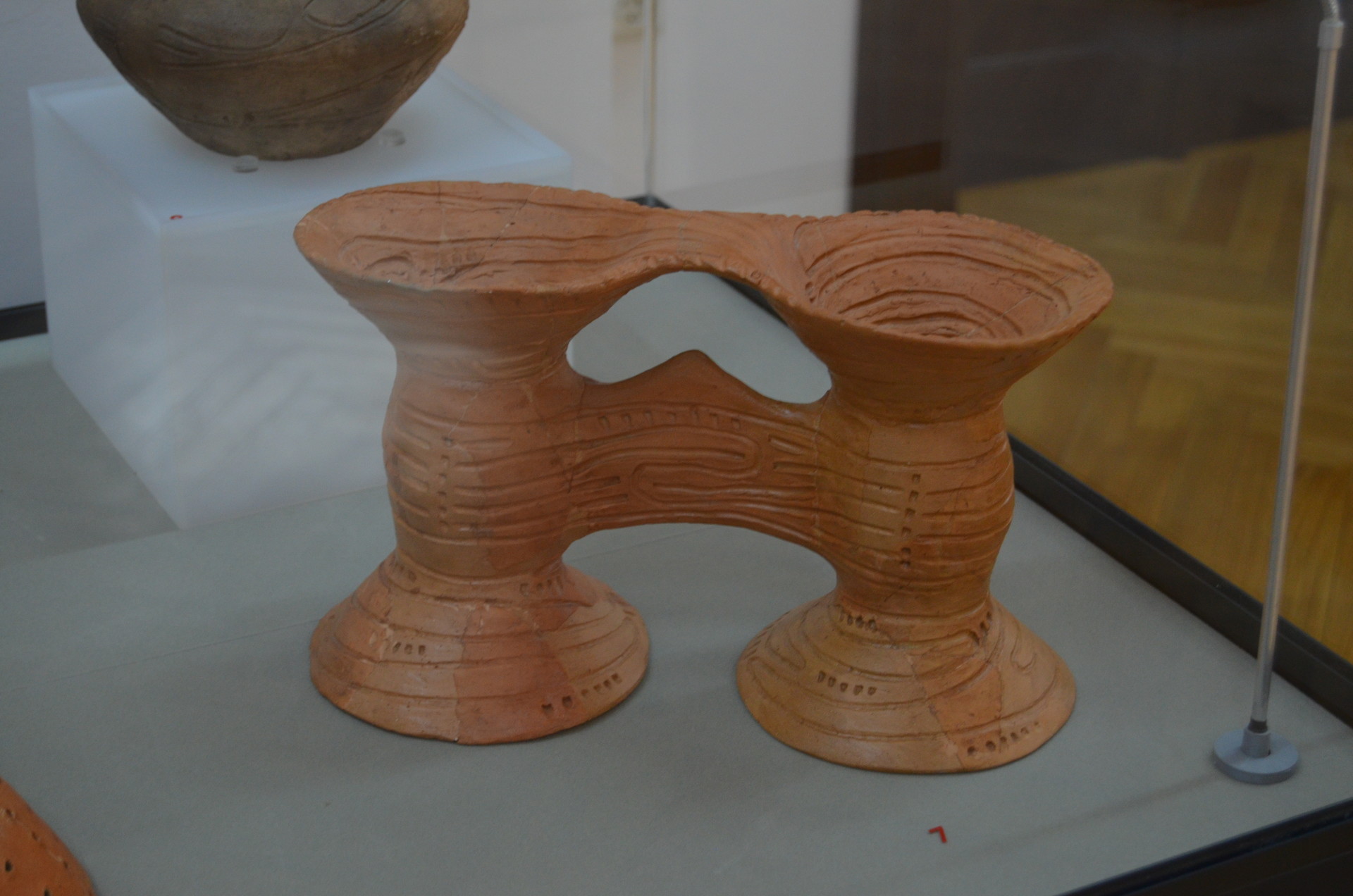
Indeed, as I am looking at this ceramic objects, I get a feeling of calm, harmony and peacefulness. The motifs are simple, but not boring, being quite interesting to watch and image how the people were creating such art pieces way back in the days using only their hands and imagination.
The last phase of the Cucuteni ceramics
Moving on to the later periods, I start to observe a few changes when it comes to the ornamentation of the vessels. In the phase “Cucuteni A-B”, the incisions and small grooves have disappeared, but the three color painting was still remaining. However, black have become more and more prevalent and from a minor role of outlining the decorative motifs, I can see that it was preferred for creating the symbols.
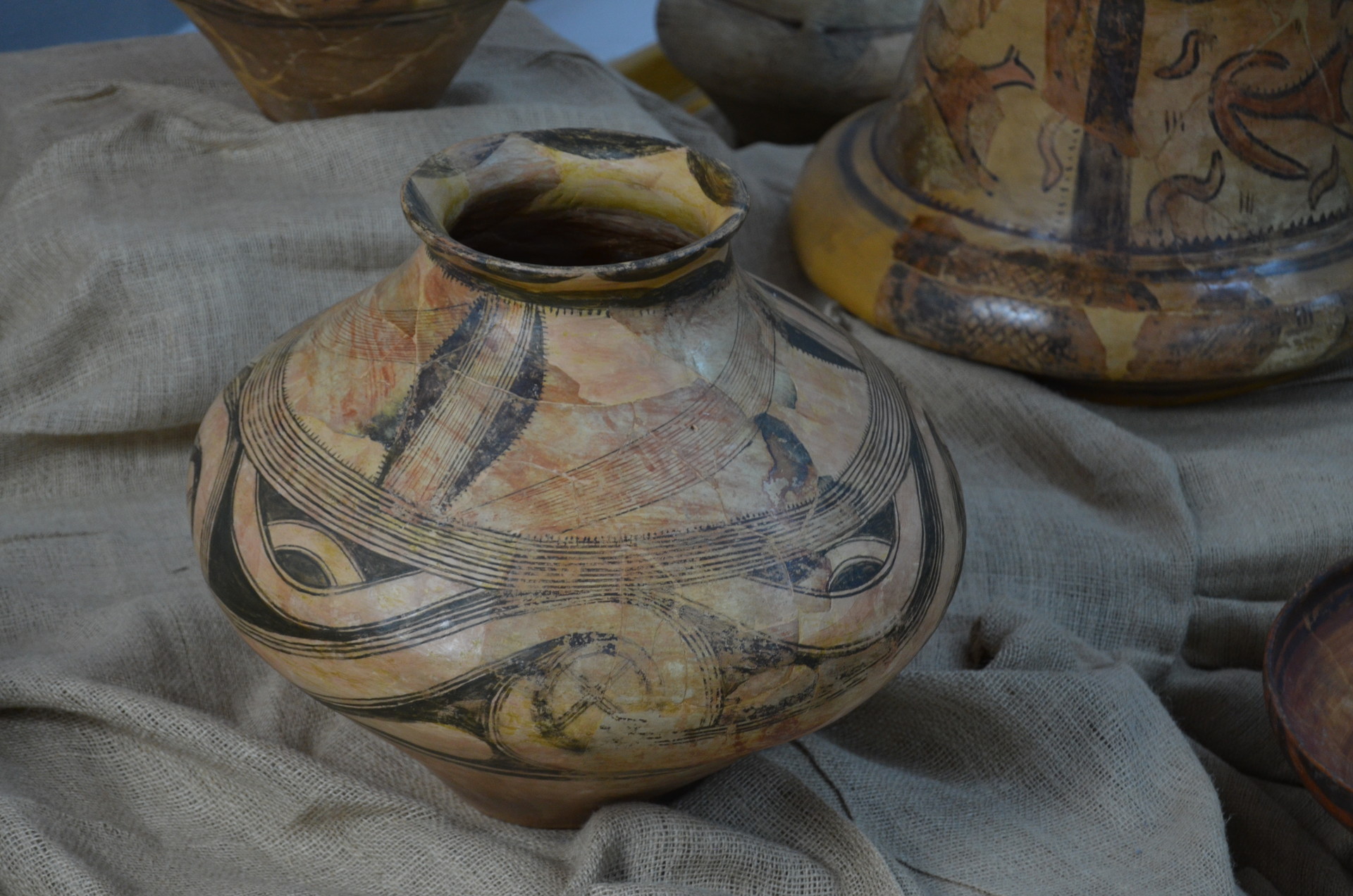
On the other hand, the spiral motif was not as present as in the first phase, but interestingly, the human silhouette started to be represented within the painting. The human figure was illustrated frontally, bi-dimensionally and simplified by using geometric shapes such as triangles, circles, parallel lines.
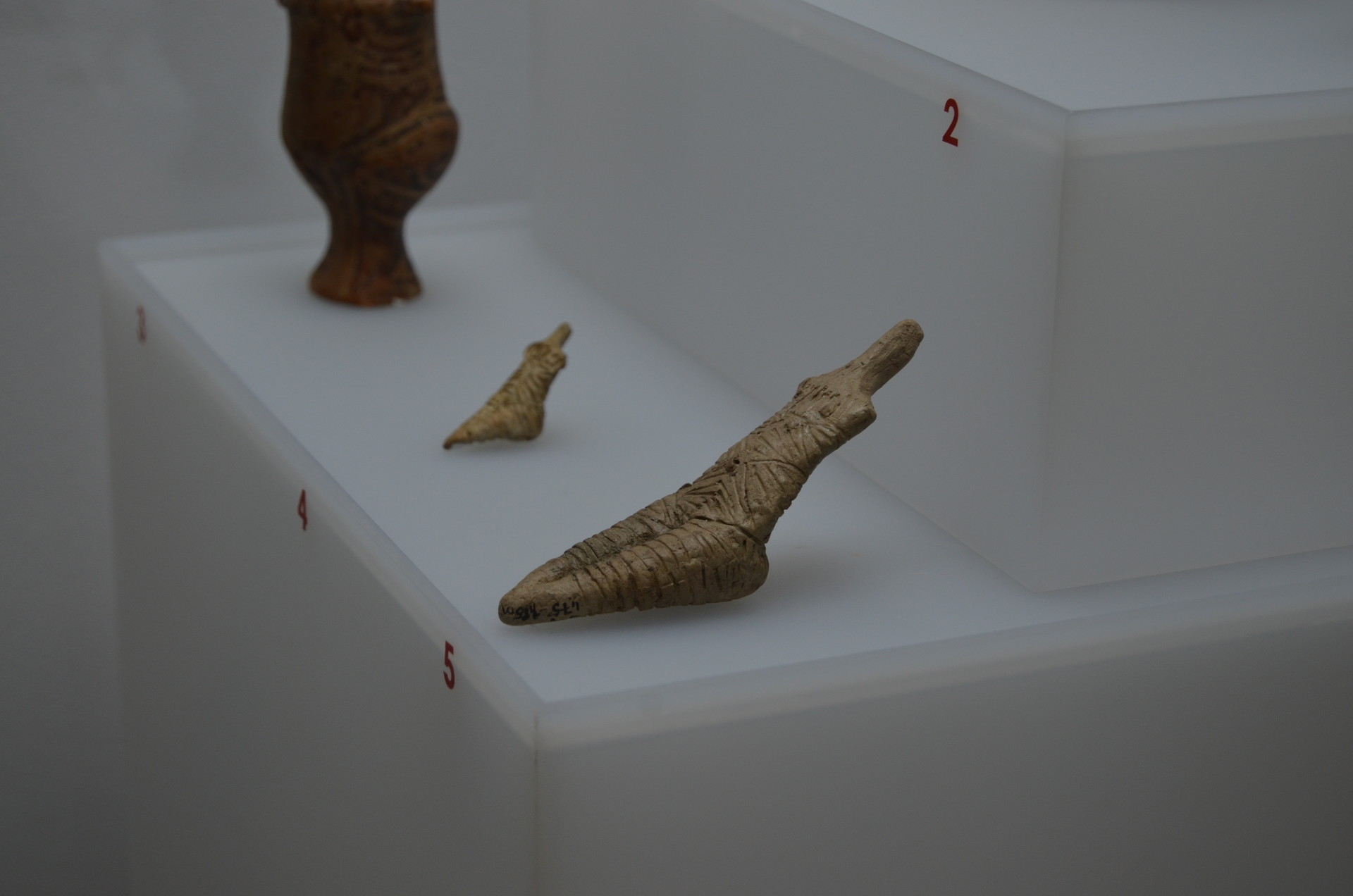
Among the many vessels are exhibited small figurines representing the female body which were probably deities symbolizing fertility and prosperity and which were also decorated with the spiral motif and the three particular colors.
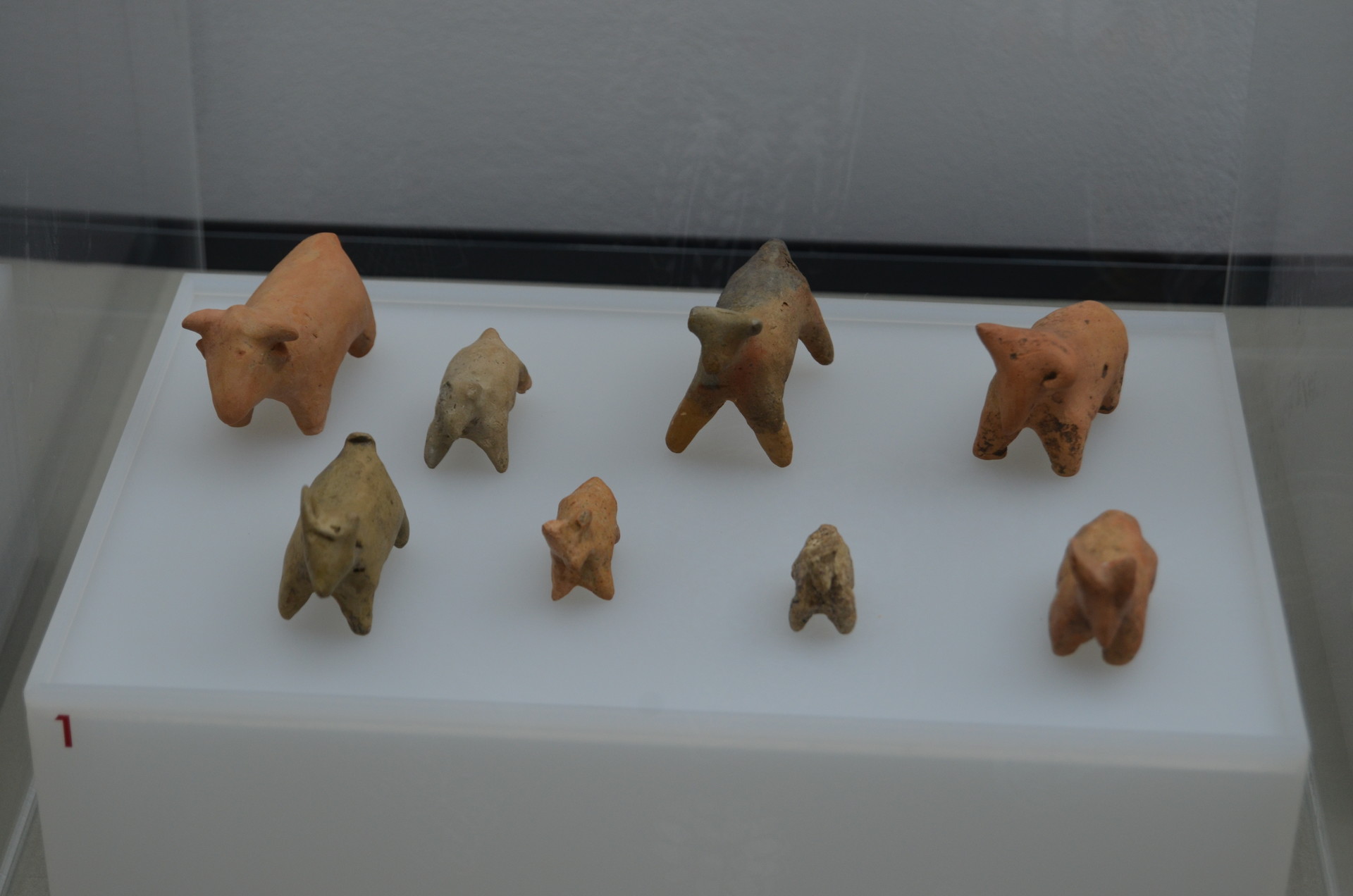
A large reconstrcuted dwalling of this interesting civilization
At the end of the Cucuteni culture exhibition I discover the most catchy corner where there is a reconstruction of a fired clay platform dwelling inspired by the ones built by this civilization.

The arrangement of this – let’s say house – presents to me a large dwelling made of a wooden structure which walls were built of wattle and daub. The settling was of rectangular shape and had ovens as heating systems and also benches, storage spaces or just areas for various domestic activities.
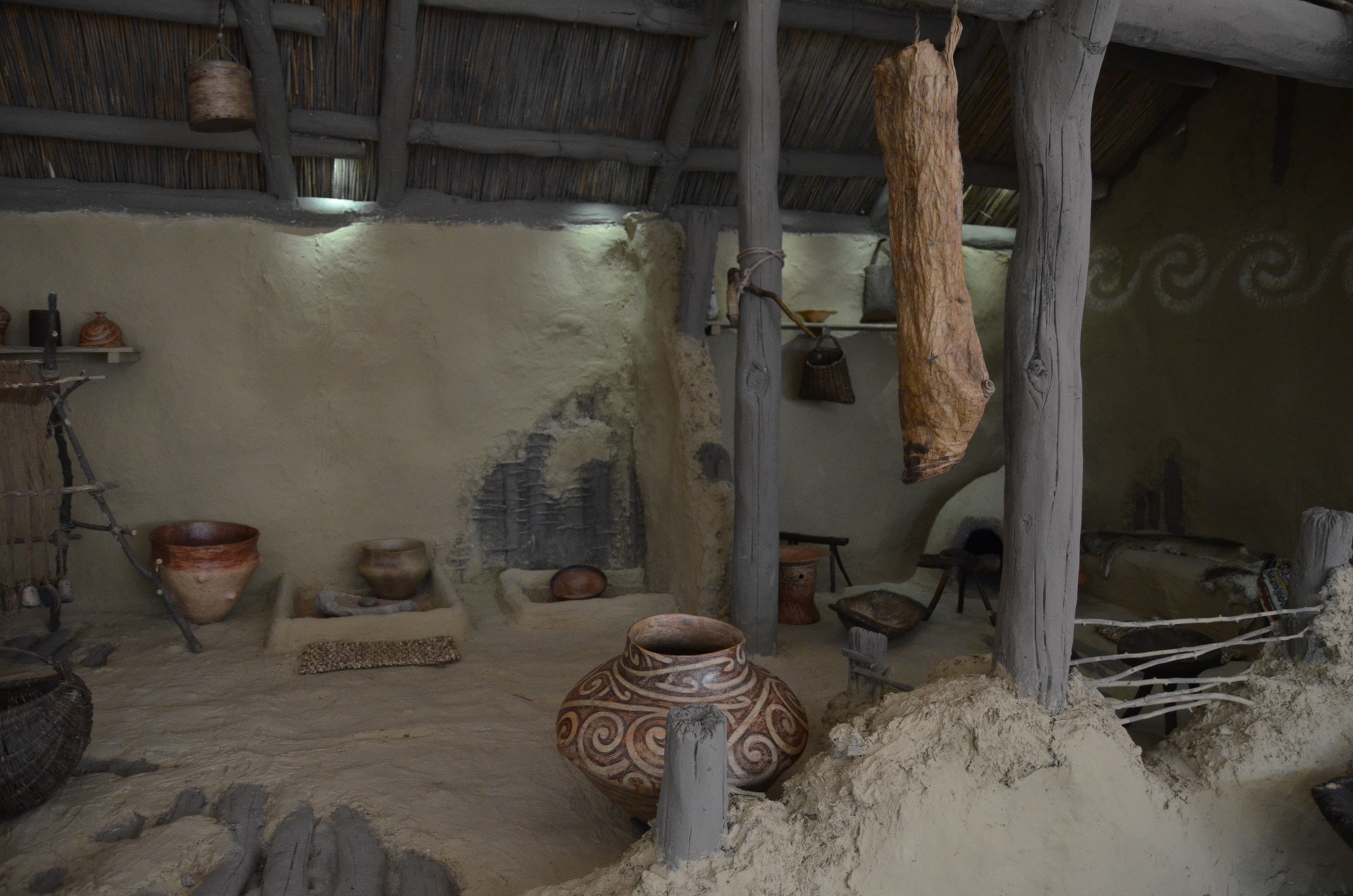
On the right side of the dwelling, standing outside of it, was also placed a wooden boat with fishing nets. Regarding to that, it is known that the painted ceramic ware civilization were founding their settlements by neighboring water sources and lands favorable to agriculture and grazing or closer to other natural resources.

Why you should visit the ceramic section belonging to the History museum of Moldavia?
I think that the reconstruction of this site is incredible because it gets the people into the world of the Cucuteni culture and creates a context from which they could understand better how these people were living and creating during past times.
If you are planning in visiting the History museum of Moldavia, make sure to not miss out on the Cucuteni culture exhibition because seeing it is for sure worth it. I almost forgot to mention that an entertaining little thing that visitors can do here is to make souvenir stamps with the specific Cucuteni decorative motifs.
Photo gallery
Want to have your own Erasmus blog?
If you are experiencing living abroad, you're an avid traveller or want to promote the city where you live... create your own blog and share your adventures!
I want to create my Erasmus blog! →



























Comments (0 comments)